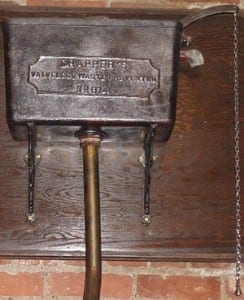Reinvent The Toilet Challenge
“IF Thomas Crapper were around today, he would find our toilets quite familiar,” says Bill Gates, referring to the Victorian manufacturer of sanitary ware whose name has become attached to one of the body’s most fundamental functions. “They haven’t seen many advances apart from handles and paper toilet rolls.” In fact, with the exception of S-traps to contain odours, flush toilets have changed little since Sir John Harrington installed one in Richmond Palace for Queen Elizabeth I.
Mr Gates considers it time for a change. On August 14th his charitable institution, the Bill & Melinda Gates Foundation, announced the gold-, silver- and bronze-medal winners in its Reinvent The Toilet Challenge, which aims to bring safe, affordable and “sustainable” loos to the 40% of the world’s population who lack access to basic sanitation, thus preventing many of the 1.5m childhood deaths from diarrhoea that now occur each year.
The Challenge is nothing if not ambitious. It seeks a toilet that costs less than five cents per user per day to operate, that requires neither a supply of clean water nor sewerage infrastructure to take the waste away, and that will generate energy and recover salts, water and other nutrients. Remarkably, despite the challenge being little more than a year old, the award winners claim to be on track to achieve all of these goals.
In third place is a toilet designed by researchers at the University of Toronto. This treats urine and faeces separately, using a material freely available in many of the world’s poorest regions: sand. Urine is filtered through sand, and the resulting liquor is exposed to ultraviolet light to sterilise it. Faeces are dried slowly within the toilet before being fed into a smouldering sand-filled reactor. The system can sanitise the waste of ten people in two hours, leaving only sand and fresh(ish) water behind.
The runner-up, from Loughborough University in Britain, brings chemical-engineering principles to bear. A tank feeds mixed urine and faeces through a rig that heats it to 200°C under high pressure, killing pathogens. Returning the superheated mixture suddenly to atmospheric pressure causes it to separate into its liquid and gaseous components. The gas is used to heat the feed tank. The liquid is fed into a digester that produces enough methane to power the entire system—and some to spare.
The winning toilet, however, is smarter still. It has been developed by Michael Hoffman of the California Institute of Technology, and has earned him the $100,000 first prize. Dr Hoffman’s toilet uses solar panels to power an electrochemical system that produces two things. One is hydrogen. The other is a compound which oxidises the salts in urine to generate chlorine. This creates a mildly disinfecting solution that can be used to flush the toilet. The hydrogen is suitable for cooking or for powering a fuel cell to produce electricity. The solid residue from the process can be employed as fertiliser.
The Gates Foundation will now pay for prototypes to be tested in the field, probably of all three winners and possibly of some other ideas, and Mr Gates hopes that the foundation’s reinvented toilets will start being deployed for real in as little as two years.
via The Economist
The Latest Streaming News: Reinvent The Toilet Challenge updated minute-by-minute
Bookmark this page and come back often
Latest NEWS
Latest VIDEO








